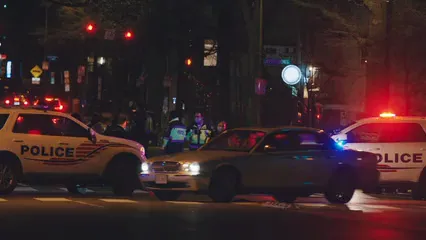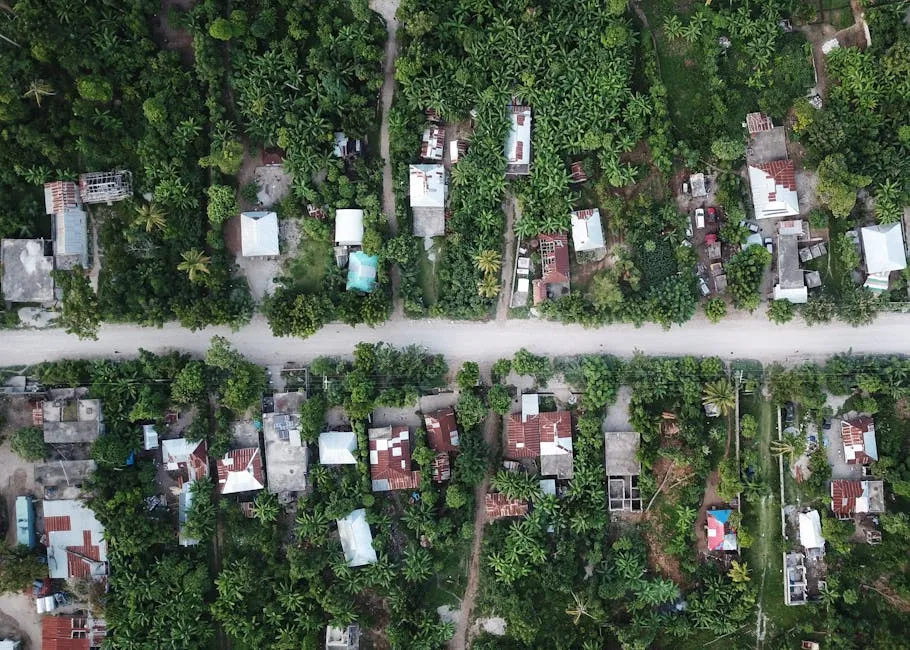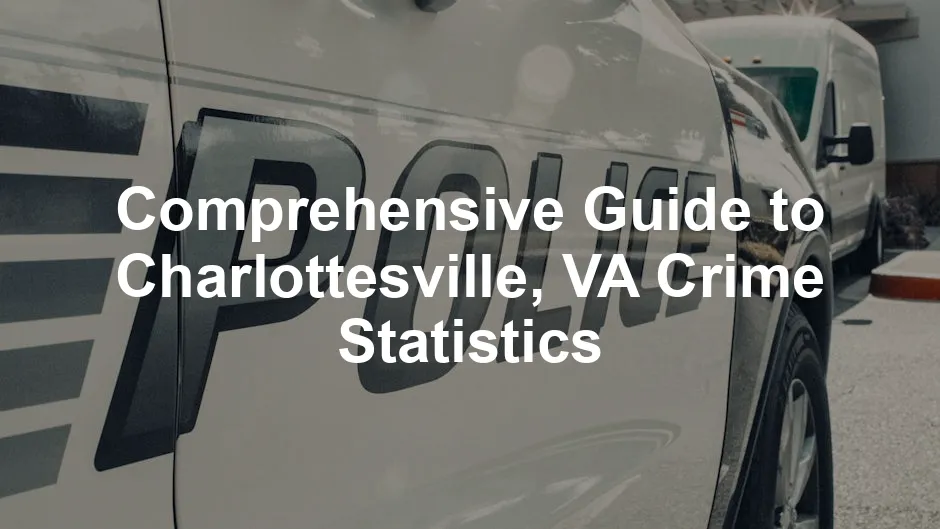Introduction
Crime statistics in Charlottesville, VA, deserve a spotlight. Understanding these statistics is crucial for both residents and potential movers. After all, no one wants to land in a neighborhood where crime rates resemble a horror movie plot!
Charlottesville, known for its rich history and vibrant culture, isn’t immune to crime. In fact, the city’s crime rates can be surprising. According to recent data, the overall crime rate stands at 39 per 1,000 residents, with a chance of becoming a victim at 1 in 25. Yikes!
Why should you care? Well, crime rates impact more than just your sense of safety. They affect real estate decisions, insurance rates, and even community dynamics. By understanding the trends and statistics, residents can make informed decisions about their safety and community involvement.
Speaking of safety, investing in a Home Security System with Camera can provide peace of mind, especially in areas with higher crime rates. These systems can help monitor your property and deter potential intruders, allowing you to sleep soundly at night.
This article aims to provide a detailed overview of crime statistics in Charlottesville, trends over the years, and comparisons between neighborhoods. With this knowledge, you’ll be empowered to navigate your way through the city’s safety landscape. So, buckle up as we take a closer look at the crime statistics that shape life in Charlottesville.

Understanding Crime Statistics
What Are Crime Statistics?
Crime statistics are numerical data representing the incidence of crime within a specific area. These statistics can include various types of crimes, such as violent crimes, property crimes, and more. Essentially, they provide a snapshot of how safe or dangerous a community might be.
How does this data come to be? Crime data is collected through a combination of law enforcement reports and surveys. Local police departments compile reports on crimes reported to them, which are then aggregated and analyzed. Various organizations, including the FBI, provide annual reports to help communities understand their safety levels.
Importance of Crime Statistics
So, why do crime statistics matter? They play a pivotal role in community safety. For residents, these numbers can influence where they choose to live, work, and play. A neighborhood with low crime rates often attracts families and businesses, creating a positive cycle of growth and safety.
For potential movers, understanding crime statistics is essential in making informed decisions. It’s not just about how charming a street looks; it’s also about how secure it feels. Real estate agents often highlight crime statistics to help buyers feel confident in their choices.
Moreover, local governments use crime statistics to shape policies and allocate resources effectively. Understanding crime trends enables law enforcement to focus efforts on high-crime areas, fostering safer communities.
In summary, crime statistics are not just numbers; they are vital indicators of community health, safety, and well-being. Understanding them can empower residents and help foster a sense of security in Charlottesville.

Overview of Crime Rates in Charlottesville
Overall Crime Rate
Charlottesville’s crime rate stands at 39 per 1,000 residents. This means, statistically, there’s a 1 in 25 chance of becoming a victim of crime. When you compare this to the state and national averages, it’s clear that Charlottesville is facing some challenges. In fact, over 97% of communities in Virginia enjoy lower crime rates. So, if you thought you’d only find crime rates like these in a big city, think again!
To enhance your security, consider adding a Ring Video Doorbell Pro 2 to your home. This smart device allows you to monitor your front door and receive alerts when someone is at your doorstep, providing an extra layer of security.

Violent Crime Statistics
Now, let’s break down the violent crime rates, which sit at 5.38 per 1,000 residents. This translates to about 244 violent crimes in a year. Here’s the specific breakdown:
- Murder: 2 cases
- Rape: 36 incidents
- Robbery: 35 occurrences
- Assault: 171 reported assaults
With these numbers, your chances of becoming a victim of violent crime are about 1 in 186. While Charlottesville may not be the wild west, it certainly has its moments.

Property Crime Statistics
Property crimes are even more prevalent, with a rate of 33.90 per 1,000 residents. That means there were approximately 1,538 property crimes last year. Here’s the breakdown:
- Burglary: 126 instances
- Theft: A whopping 1,249 cases
- Motor Vehicle Theft: 163 incidents
If you own a car, keep a close eye on it! The chance of becoming a property crime victim is about 1 in 30. So, while you can enjoy the sights of Charlottesville, don’t forget to lock your doors!

For added security, why not invest in a Smart Lock Keyless Entry? It allows you to securely lock and unlock your doors without the hassle of keys, giving you peace of mind when you’re away from home.
Year-over-Year Trends
When we look at crime trends over the past few years, it’s important to note that crime rates have fluctuated. For instance, total crime increased by 23.2% year-over-year, with violent crime up by 6.6% and property crime rising by 26.3%. These numbers paint a picture of a city grappling with rising crime, despite its charming façade.
However, some experts suggest that crime rates may peak during the summer months, which could contribute to the annual fluctuations. In recent years, community initiatives have aimed to address these issues. While the data might seem grim, there’s hope!
Charlottesville is more than just numbers; it’s a vibrant community working to improve safety and reduce crime. Understanding these statistics can empower residents and potential movers to make informed choices about their living situations.

Neighborhood Crime Analysis
Crime Variability by Neighborhood
Charlottesville boasts a diverse range of neighborhoods, each with its own unique charm and, yes, crime rates. Some areas are as serene as a Sunday morning stroll, while others might feel like you’ve walked into a thriller novel.
For those seeking peace of mind, neighborhoods such as Blenheim/Overton and Ivy stand out as the safest havens. In these areas, crime rates resemble a calm lake rather than a raging river. Residents enjoy a strong sense of security, with low incidents of both violent and property crimes. Other safe spots include Proffit, Eastham/Key West, and North Downtown, where community spirit runs high, and crime rates run low.
For a deeper understanding of the safety in one of the safest neighborhoods, check out the Ivy League men’s basketball statistics.
On the flip side, some neighborhoods experience higher crime rates. Areas like Main-Starr Hill and Orangedale-Prospect Ave report more frequent incidents. Factors contributing to this variability include socioeconomic conditions, police presence, and community engagement. Economic disparities often lead to heightened crime, as those facing financial struggles may resort to illegal activities.

High Crime Areas
In neighborhoods with higher crime rates, the reasons can be complex. Take Main-Starr Hill, for instance. With its proximity to nightlife and entertainment, this area sees more foot traffic, but that also attracts a higher likelihood of petty crimes and disturbances.
Another contributing factor is the socioeconomic landscape. Areas with lower income levels often suffer from increased crime. A lack of resources can lead to desperation, pushing individuals towards unlawful actions. Moreover, police visibility plays a crucial role. A strong police presence can deter crime, while less visible forces may struggle to maintain order.

Resident Sentiment on Safety
Survey data from local residents reveal a mixed bag of feelings about safety in Charlottesville. According to a recent poll conducted among 70 locals, about 40% feel safe, stating they experience very little crime and would stroll alone at night without concern. However, 60% expressed apprehension, indicating noticeable safety issues and hesitating to walk alone after dark.
This sentiment highlights a crucial aspect of community life—perception often influences reality. While the statistics may paint a certain picture, individual experiences shape how residents feel about their neighborhoods. The disparity in feelings about safety underscores the importance of community dialogue and engagement in fostering a sense of security.
To further empower yourself, consider carrying a Personal Safety Alarm Keychain. This portable device can emit a loud alarm, drawing attention in case of emergencies and giving you some added confidence while out and about.

Comparative Analysis
Crime Comparison: Charlottesville vs. Virginia
When comparing Charlottesville’s crime rates to other cities in Virginia, the numbers tell a revealing story. Charlottesville’s overall crime rate stands at 39 per 1,000 residents, significantly higher than many surrounding areas. In fact, more than 97% of communities in Virginia report lower crime rates.
For instance, cities like Gordonsville and Waynesboro boast crime rates that are markedly lower, making them appealing alternatives for those concerned about safety. In Gordonsville, the violent crime rate is about 370.1 per 100,000, while Waynesboro has a rate of 251.0 per 100,000, showcasing a stark contrast to Charlottesville’s figures.
Moreover, property crime in Charlottesville is notably high, with a rate of 33.90 per 1,000 residents. Comparatively, cities like Richmond and Newport News also report high property crime rates, but Charlottesville still stands out for its elevated levels.
This comparative analysis is essential for residents and potential movers. It provides a clearer picture of where safety lies within the state, helping individuals make informed decisions about their living situations. By understanding these dynamics, residents can better navigate their neighborhoods and advocate for improvements in community safety measures.

National Comparison
Charlottesville’s crime rates tell a vivid story when lined up against national averages. The overall crime rate sits at 39 per 1,000 residents. That’s a mouthful! But here’s the kicker: this figure is 70% higher than the national average. While the national violent crime rate hovers around 4 per 1,000, Charlottesville’s is a hefty 5.38. Property crime follows a similar trend, with a rate of 33.90 per 1,000 against a national average of just 20. So, in simpler terms, if you thought your neighborhood had its fair share of trouble, Charlottesville might make you reconsider!

In light of these statistics, it’s wise to consider a Emergency Survival Kit. This kit can help you prepare for unexpected situations, ensuring you have essential supplies at your fingertips.
Historical Context
To understand where Charlottesville stands today, we must glance back at its crime history. Over the years, crime stats have seen some dramatic swings. For instance, in 2000, the violent crime rate was a staggering 1052.3 per 100,000 residents. Fast forward to 2022, and that number has decreased to 331.2. Yet, property crime remains a nagging issue, showing fluctuations that often correlate with economic changes and community dynamics. In recent years, property crime rates have increased significantly, rising by 26.3% year-over-year. This history suggests that while there have been improvements, challenges persist, making it crucial for residents and policymakers to stay vigilant and proactive.

Potential Causes and Contributing Factors
Socioeconomic Factors
Let’s dive into the socioeconomic soup that contributes to crime rates in Charlottesville. Unemployment stands at 2.6%, which is lower than the national average. Sounds good, right? But when housing costs soar—median home prices around $329,100—the pressure cooker of financial strain can lead to crime. Affordable housing is a distant dream for many, pushing some toward desperate measures. Education levels also play a role; higher educational attainment often correlates with lower crime rates. Yet, disparities exist, making it crucial for community initiatives to address these socioeconomic challenges.

Law Enforcement and Community Engagement
Now, let’s chat about the police. Charlottesville boasts a police-to-resident ratio of 3.21 officers per 1,000 residents. While that sounds decent, it’s essential to consider community engagement. High visibility can deter crime, but how effective is the response when residents call for help? According to locals, police presence is seen as supportive, but response times can be sluggish. Enhancing community policing efforts may bridge this gap, fostering trust and cooperation between law enforcement and residents.
Seasonal Trends
Ah, the seasons! They bring joy, sunshine, and, sometimes, a spike in crime. Data suggests that crime rates in Charlottesville often peak during the summer months. Why? Perhaps it’s the increase in outdoor activities and gatherings that attract more people—and, unfortunately, more opportunistic criminals. Additionally, the student population swells during the academic year, adding another layer of complexity. Understanding these seasonal trends can help law enforcement and community leaders strategize more effectively, ensuring safety year-round.
By recognizing these contributing factors, residents can better navigate the crime landscape in Charlottesville. This awareness empowers individuals to engage with local initiatives aimed at reducing crime and fostering a safer, more inclusive community.

Resources for Residents
Crime Data Access
Staying informed about crime statistics in Charlottesville is crucial for residents. Thankfully, several resources provide access to detailed crime data. One of the best places to start is the Charlottesville Crime Data page, which offers a comprehensive overview of crime reports and statistics collected by local law enforcement. Need specific information? You can submit a FOIA request to access additional public records.
Another excellent resource is NeighborhoodScout, which provides an easy-to-read breakdown of the city’s crime rates and comparisons with national averages. For a more interactive experience, check out the Citizen Connect tool, which allows users to visualize crime incidents and receive alerts about local safety.
Finally, don’t forget to explore community resources that detail neighborhood-specific crime information. Websites like AreaVibes also offer insights into the safety of different neighborhoods, helping you find the safest spots in Charlottesville.

Community Safety Initiatives
Charlottesville is not just about statistics; it’s also about community action! Several initiatives are in place aimed at reducing crime and enhancing safety. One such program is the Community Safety Coalition, which unites residents, local businesses, and law enforcement to address safety concerns. Through community meetings and events, residents can voice their opinions and collaborate on solutions.
Additionally, the Neighborhood Watch Program encourages citizens to take an active role in crime prevention. By fostering relationships between neighbors, this initiative enhances vigilance and promotes a sense of community.
The local police force also runs various outreach programs to educate residents about crime prevention strategies, such as self-defense classes and safety workshops. These initiatives not only aim to lower crime rates but also help build trust between law enforcement and the community.
By actively participating in these programs, residents can contribute to a safer environment for everyone. Engaging in these initiatives creates a stronger, more united community that prioritizes safety and well-being.
Conclusion
Understanding crime statistics in Charlottesville is essential for residents and potential movers alike. With an overall crime rate of 39 per 1,000 residents and a significant chance of becoming a victim, awareness is key. The statistics reveal a city facing challenges, yet it is also a vibrant community working tirelessly to foster safety and security.
Being informed empowers residents to make safe living decisions. Low-crime neighborhoods, like Blenheim/Overton and Ivy, are inviting spaces for families and individuals seeking peace of mind. By engaging with local initiatives and discussing community safety, residents can play an active role in crime prevention efforts.
Engaging in community discussions fosters a collective approach to safety, creating an environment where everyone can thrive. So, don’t just read the numbers—get involved, stay informed, and help shape a safer Charlottesville for all!
FAQs
What are the safest neighborhoods in Charlottesville?
If safety is your priority, consider moving to one of these neighborhoods known for their lower crime rates: Blenheim/Overton, Ivy, Proffit, Eastham/Key West, North Downtown. These areas not only offer a sense of security but also vibrant community connections.
How does Charlottesville’s crime rate compare to other cities?
When stacked against nearby cities, Charlottesville’s crime rates are notably higher. For instance, Gordonsville has a crime rate of 78.4 per 100,000, and Waynesboro stands at 161.7 per 100,000. This stark contrast highlights the need for awareness and community action in Charlottesville.
What resources are available for residents concerned about crime?
Residents concerned about crime can turn to various resources: Local law enforcement contacts for immediate assistance, Community watch programs for neighborhood safety initiatives, Online platforms like NeighborhoodScout for crime statistics and trends.
How can I access more detailed crime data?
Accessing detailed crime data is straightforward. Residents can visit the city’s official crime data page or submit a FOIA request for specific information. Engaging with local law enforcement can also provide insights into public records and additional resources.
What steps are being taken to reduce crime in Charlottesville?
Charlottesville is committed to improving community safety through various initiatives. The Community Safety Coalition works to unite residents and law enforcement, while the Neighborhood Watch Program encourages vigilance and cooperation. Additionally, law enforcement offers workshops and outreach programs to educate residents on crime prevention strategies. These efforts aim to foster a safer city for everyone.
Please let us know what you think about our content by leaving a comment down below!
Thank you for reading till here 🙂
All images from Pexels




